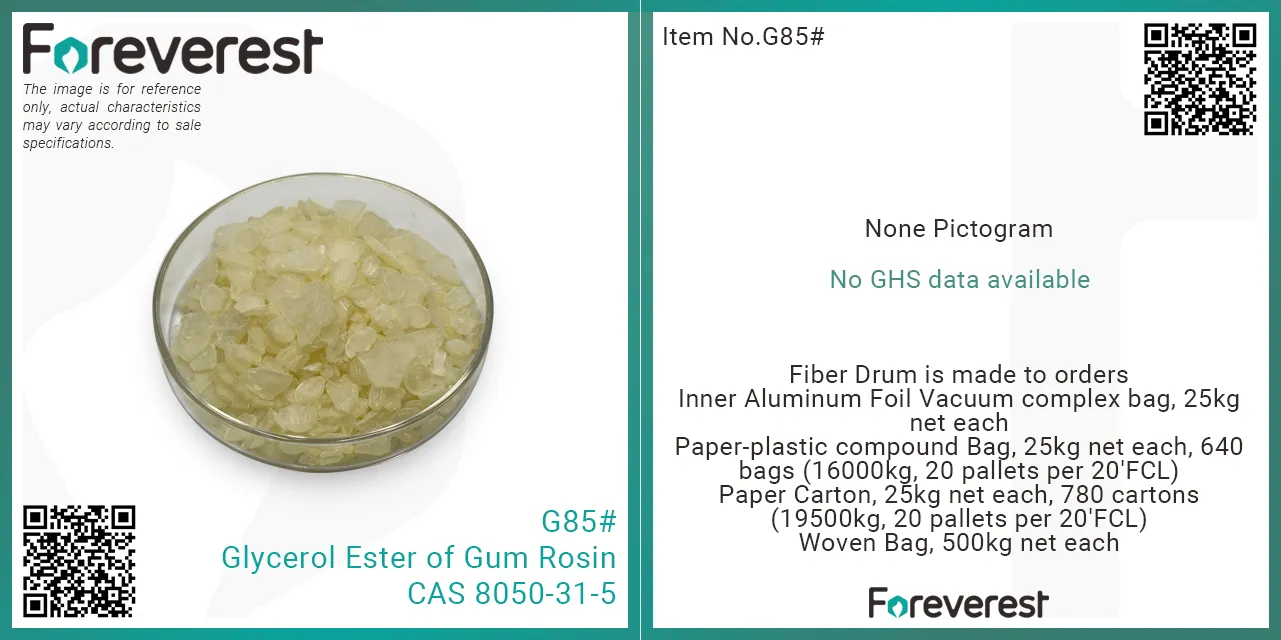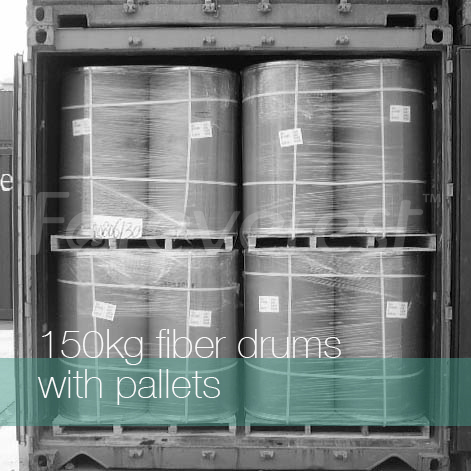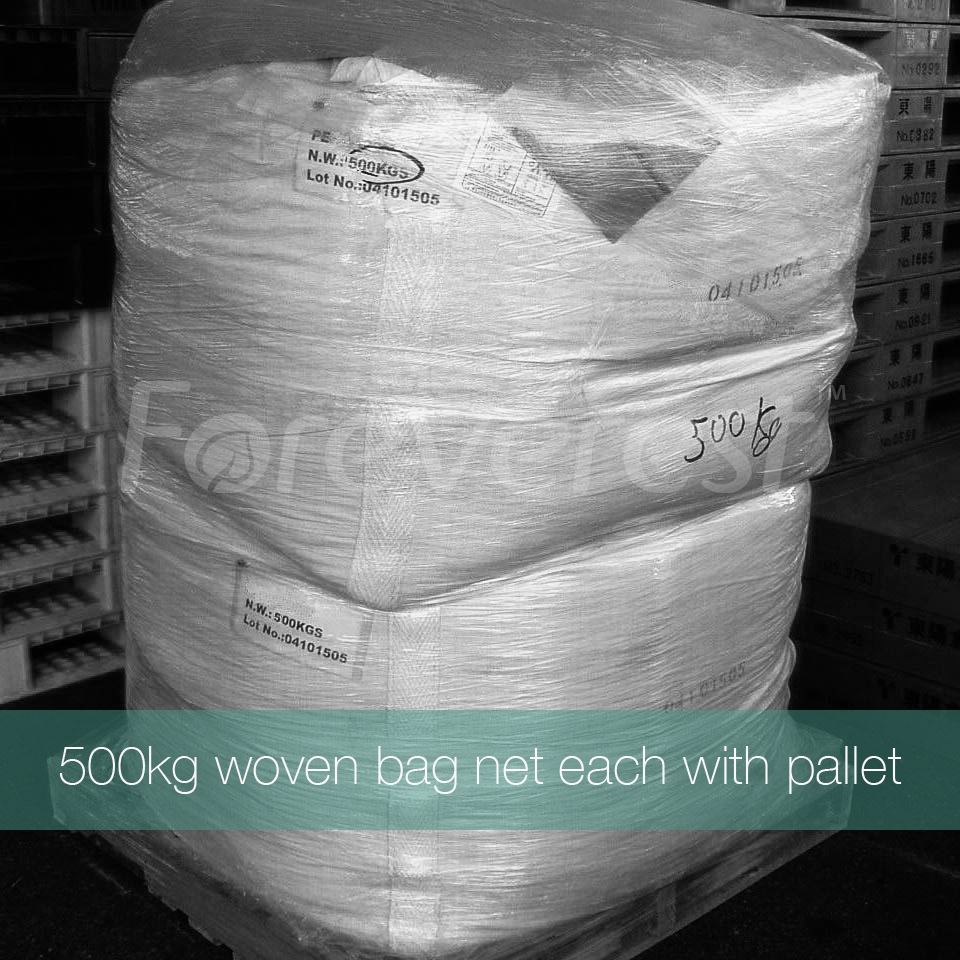Glyceryl Rosinate (Food)
Glyceryl Rosinate, also known as Glycerol Ester of Gum Rosin (GEGR) or Ester Gum, is a crucial oil-soluble food additive. Its distinctive high density property enables it to effectively keep oils in suspension in water, making it widely used as a beverage stabiliser to ensure product uniformity and stability.
Within the food industry, Glyceryl Rosinate is extensively employed as a base in the production of chewing-gum. It also serves as an alternative to brominated vegetable oil (BVO) in citrus oil flavoured soft drinks, or can be used in conjunction with BVO to achieve desired emulsification.
Glyceryl Rosinate has received approval from various international regulatory bodies, including FDA 172.735 and Regulation (EU) No 231/2012, further confirming its safety and compliance as a food additive. Additionally, in the production of certain chewing gums (such as SBR or polyvinyl acetate based gums), it can function as an antioxidant and softening agent.
Substance Identification
| Synonyms | Ester Gum | Glycerol Ester of Gum Rosin | GEGR |
| CAS | 8050-31-5 |
| EINECS | 232-482-5 |
| FEMA | N/A |
| HS.CODE | 38069000 |
| Molecular Formula | N/A |
| Moleclar Weight | N/A |
Application & Uses
- In the production of SBR or polyvinyl acetate-based chewing gum and bubble gum, it acts as an antioxidant and softening agent (approved by FDA 172.615).
- Functions as an emulsification stabiliser in soft drinks.
- Serves as a tackifier in the depilatory and cosmetic industry.
- Applied as a coating on urea fertiliser for tobacco.
- Acts as a thixotropic agent in pesticide dispersions.
Features & Benefits
- Its high density helps keep oils in suspension in water, which is why it's often used as a beverage stabiliser.
- It also serves as an alternative to brominated vegetable oil (BVO) in citrus oil-flavoured soft drinks.
- It's completely soluble in aromatic, aliphatic, and chlorinated solvents; however, it's insoluble in alcohols and most ketones (with the exceptions of butanol and MEK).
Sales Specification
| ITEM | VALUE | TEST METHOD & UNIT |
|---|---|---|
| Colour | 7 to 8 | @Gardner |
| Softening Point | 82 to 90 | @R&B, °C |
| Heavy metals | 20 max | @PB, mg/kg |
| Acid Value | 3 to 8 | mgKOH/g |
| Arsenic | 2 max | mg/kg |
| Ash | 0.1 max | % |
| Solubility | Clear | with Benzene 1:1 |
| ITEM | VALUE | TEST METHOD & UNIT |
|---|---|---|
| Colour | 3 to 4 | @Fe-Co Scale |
| Softening Point | 82 to 90 | @R&B, °C |
| Heavy metals | n/a | @PB, mg/kg |
| Acid Value | 3 to 9 | mgKOH/g |
| Arsenic | n/a | mg/kg |
| Ash | n/a | % |
| Solubility | Clear | with Benzene 1:1 |
| Specific Gravity | 1.06 to 1.09 | @25 °C |
Package
- Fiber Drum is made to orders
- Inner Aluminum Foil Vacuum complex bag, 25kg net each
- Paper-plastic compound Bag, 25kg net each, 640 bags (16000kg, 20 pallets per 20'FCL)
- Paper Carton, 25kg net each, 780 cartons (19500kg, 20 pallets per 20'FCL)
- Woven Bag, 500kg net each
GHS Hazard Statements
| No data available |
Storage
- Environmental & Temperature Control:
- Specified Temperature Range: Store within the specific temperature range recommended on the product's Technical Data Sheet (TDS) or by the supplier, typically in a cool, dry place. Avoid extreme heat or cold to prevent polymerization or crystallization.
- Moisture Protection: Resins, especially moisture-curing types, are highly sensitive to humidity. Always store in a dry environment, away from moisture.
- Light Protection: Avoid direct sunlight and strong light exposure to prevent UV-induced polymerization or degradation.
- Good Ventilation: Ensure the storage area is well-ventilated to prevent the accumulation of harmful vapours or odours.
- Container Management & Sealing:
- Sealed Containers: Resins must be stored in their original, tightly sealed containers. Once opened, use as quickly as possible or re-seal securely to prevent air and moisture ingress.
- Inert Gas Protection: For certain oxygen-sensitive resins, it's advisable to purge the container with dry inert gas (e.g., nitrogen) before re-sealing after opening.
- Clear Labelling: Ensure all containers are clearly labelled with product name, batch number, production date, and expiry date.
- Safety & Isolation:
- Keep Away from Ignition Sources: The storage area should be away from heat, sparks, open flames, and all sources of ignition, especially for flammable resins.
- Avoid Incompatibles: Avoid co-storage with hardeners, accelerators, or other incompatible chemicals to prevent unintended reactions.
- Grounding: For flammable liquid resins, ensure equipment used for storage and transfer is earthed to prevent static build-up.
- Handling & Inspection:
- Careful Handling: Handle resins with care, avoiding vigorous shaking or tipping.
- Regular Inspection: Periodically check containers for leaks, damage, or bulging. After prolonged storage, always check the resin's quality (e.g., viscosity, appearance) before use to ensure it meets requirements.
- Compliance & Emergency Preparedness:
- Regulatory Compliance: Strictly comply with all national and local safety and environmental regulations.
- Emergency Preparedness: Have necessary emergency equipment (e.g., absorbent materials, fire extinguishers) on hand and ensure emergency plans are in place for spills, fires, etc.
Relation Products
Relation Articles
Remark
Start Purchasing
-
Minimum Order Quantity
Quote required -
Lead Time
Quote required -
Available Incoterms
Quote required -
Regional Availability
Quote required


